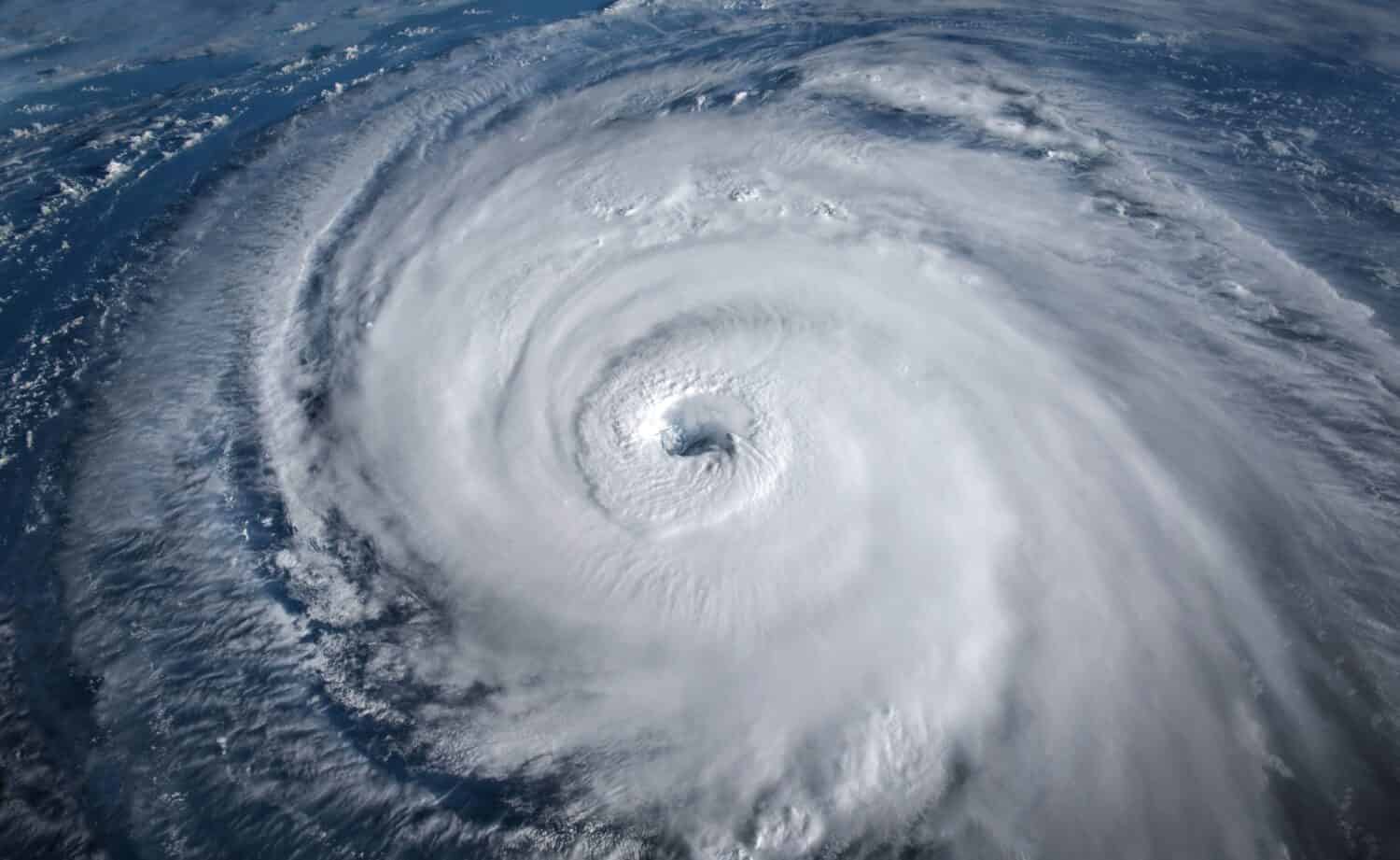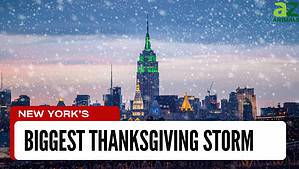The state of Maryland is known for its picturesque landscapes and charming coastal towns, but it has faced several trials in the face of natural disasters. Among these, the memory of Hurricane Hazel stands out as one of the worst disasters experienced by the state.
Hurricane Hazel in Maryland
The story of Hurricane Hazel begins in the Caribbean Sea. Born as a tropical depression on October 5, 1954, this meteorological phenomenon gained strength as it moved northwestward, where it intensified into a Category 4 hurricane. Therefore, in a week, by October 12, Hurricane Hazel had become a full-fledged hurricane and set its sights on the southeastern United States.
Conditions Required for Hurricane Hazel to Affect Maryland
Hurricane Hazel’s journey to Maryland was shaped by a combination of atmospheric and geographical conditions. In October 1954, as the hurricane formed in the Atlantic Ocean, it encountered a favorable environment for intensification. Warm sea surface temperatures provided the energy needed to fuel the storm’s growth while relatively low wind shear allowed it to organize and strengthen.
As Hazel tracked northward, it encountered the unique topography of the Eastern United States. The presence of the Appalachian Mountains to the west and the Atlantic Ocean to the east played a role in influencing the hurricane’s path and intensity. The mountains disrupted the flow of the storm as well as weakened it as it moved inland. However, the Mid-Atlantic region, which includes Maryland, still experienced the impact of Hazel’s fierce winds, heavy rainfall, and storm surge. Therefore, the combination of Hazel’s intensification over warm waters and its interaction with the geographic features of the region created the complex conditions that brought this powerful hurricane to Maryland’s doorstep.
On October 15, 1954, Hurricane Hazel made landfall near the border of North and South Carolina. The fierce winds, torrential rain, and storm surge that accompanied the hurricane left a trail of destruction in its wake. As Hazel continued its northward trajectory, it ventured into the Mid-Atlantic region, taking a course that would forever alter the course of Maryland’s history.
As Hurricane Hazel continued its path, with wind speeds of around 130-150 mph, it unleashed its fury on Maryland on the evening of October 15, 1954. The hurricane did not directly hit Maryland first, but its reach extended far enough to cause widespread devastation in the state.
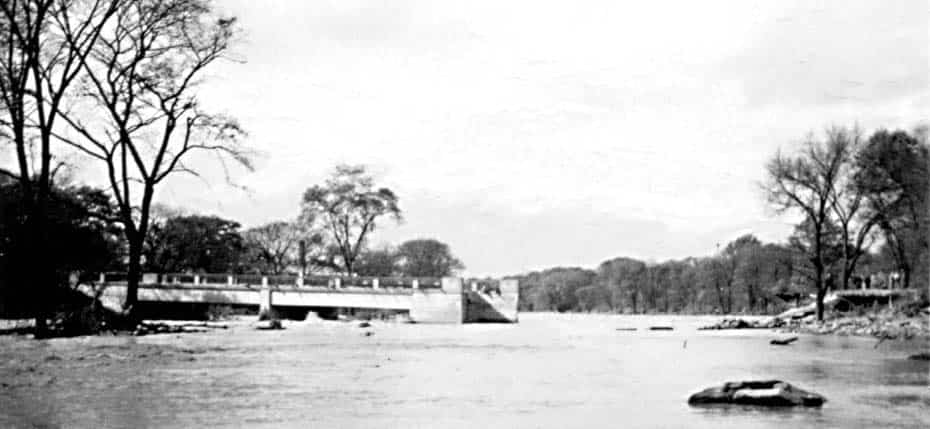
Hurricane Hazel caused severe damage in many parts of New England, including Maryland.
Coastal Havoc Created in Maryland
Maryland’s coastal communities bore most of the brunt of Hazel’s fury. The hurricane’s powerful winds and storm surge combined with high tides. This caused significant flooding along the Chesapeake Bay and its tributaries. Water levels rose rapidly, inundating coastal towns and low-lying areas, resulting in widespread damage to homes, businesses, and infrastructure.
Moreover, towns like Crisfield and Havre de Grace faced inundation on an unprecedented scale. The tidal surge and reached as high as 12 feet in some areas. This eroded shorelines and caused extensive property damage. The devastation was exacerbated by the fact that Hazel struck during a time of high tide, amplifying the impact of the storm surge.
Staying Safe from Hurricanes in Maryland
Maryland’s proximity to the Atlantic Ocean makes it susceptible to the powerful forces of hurricanes. As Hurricane Hazel’s impact vividly demonstrated, the need for preparedness and safety measures cannot be overstated. With the potential for destructive winds, heavy rainfall, and storm surges, understanding how to stay safe during hurricanes is paramount for Maryland residents. Here are some tips on how individuals and communities can effectively navigate the storm and prioritize safety.
Stay Informed
One of the first steps in hurricane preparedness is staying informed. Monitor weather forecasts, listen to alerts from the National Weather Service (NWS), and keep a weather radio on hand. Stay updated on the storm’s track, intensity, and expected impacts for your area. Modern technology, such as smartphone apps and social media platforms, can also provide real-time updates and emergency alerts.
Create a Family Emergency Plan
Developing a family emergency plan is also essential to keeping everyone around you safe. Determine evacuation routes, identify safe shelters, and establish a communication plan with family members. Make sure everyone in the household knows the plan and how to contact each other in case of separation.
Assemble an Emergency Kit
Prepare an emergency kit that includes essential supplies such as non-perishable food, water, medication, first aid supplies, flashlight, batteries, and important documents. Make sure to consider the needs of all family members, including pets, when assembling your kit.
Secure Your Property
Before a hurricane, secure all your property by bringing outdoor furniture, decorations, and plants indoors. Board up windows or install storm shutters to protect against flying debris. Reinforce garage doors to prevent damage from high winds.
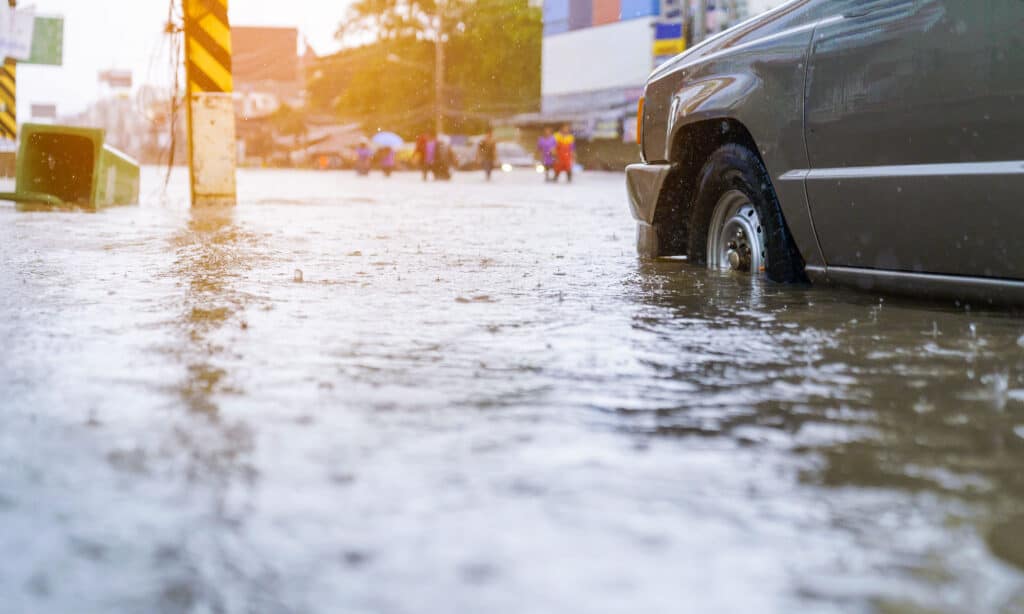
Hurricanes can bring torrential rains and floods, which makes it necessary to stay prepared for one.
©thanatphoto/Shutterstock.com
Evacuation Preparedness
If authorities issue evacuation orders, make sure to follow them promptly. Have a pre-planned destination in mind in case of a hurricane, whether it’s a friend’s house, a shelter, or a hotel, so you know where to go in case disaster strikes. Ensure your vehicle is in good condition and has a full tank of gas before the storm hits.
During the Storm: Safety Measures
When the hurricane arrives, prioritize safety by staying indoors and away from windows. This is important because windows can easily break due to the power of the storm. Keep a battery-powered weather radio handy for updates and remember to charge the batteries in advance.
Avoid using candles and opt for flashlights to prevent any fires. If the power goes out, turn off major appliances to prevent a surge when the power is restored. Reduce use of appliances and electricity during storms in case gas lines or electric lines break elsewhere, because broken gas lines can increase the risk for fires.
After the Storm: Caution and Care
After the hurricane passes, exercise caution when venturing outside. Be aware of downed power lines, standing water, and potential hazards because these can result in electric shocks and other health hazards. Stay updated on road closures and follow instructions from local authorities.
Collaborate and Support
Community collaboration is extremely essential during and after a hurricane. Help your community members by checking on neighbors, especially those who are elderly or have special needs. Also, offer support and assistance where possible.
Learn from Experience
Review your experiences and take note of lessons learned after a hurricane. Use this knowledge to refine your emergency plans and improve your preparedness for future events.
Impact of Hurricanes on Wildlife in Maryland
Maryland’s diverse ecosystems host a wide array of wildlife, from the coastal habitats along the Chesapeake Bay to the forests and wetlands that stretch inland. While these creatures have evolved to adapt to the natural rhythms of their environments, the disruptive force of hurricanes can pose significant challenges to their survival. As demonstrated by the impact of Hurricane Hazel on coastal communities, the intersection of powerful storms and fragile ecosystems can have several negative effects.
Coastal Avian Residents
The coastal regions of Maryland provide critical habitats for numerous bird species, including shorebirds, waders, and waterfowl. These avian residents depend on the intertidal zones, marshes, and estuaries for feeding, nesting, and migration. Hurricanes, with their storm surges and high winds, can alter these habitats dramatically. Nesting sites can be destroyed, food sources disrupted, and the salinity levels of water bodies affected. Young birds may be particularly vulnerable, as their nests are often situated in low-lying areas prone to flooding.

Waterfowl like Muscovy ducks can be in danger from the impacts of hurricanes.
©iStock.com/Jacqueline Nix
Aquatic Life in Turmoil
The Chesapeake Bay, one of Maryland’s defining natural features, is home to a rich diversity of aquatic life. Fish species such as striped bass, blue crabs, and oysters thrive in its waters. However, hurricanes can introduce a host of problems. Storm surges can lead to increased salinity levels in the bay, affecting the delicate balance of its ecosystems. The surge of freshwater runoff from heavy rainfall can alter the water’s chemistry, impacting fish populations. Sediment stirred up by the storm can smother oyster beds and underwater vegetation, affecting the entire food chain.
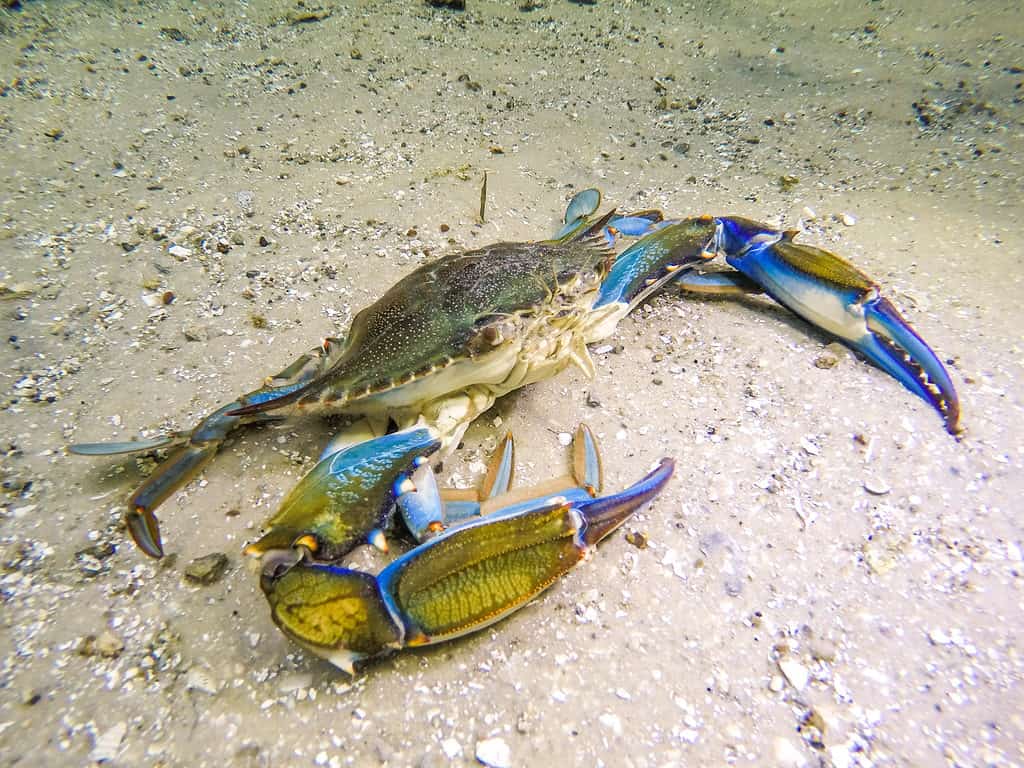
Blue crabs are native to Maryland and Chesapeake Bay, but their habitats can be disrupted by hurricanes.
©Jen Helton/Shutterstock.com
Terrestrial Dwellers
Maryland’s forests and wetlands shelter a variety of terrestrial creatures, from mammals to amphibians. Hurricanes can uproot trees, create standing water in forested areas, and disrupt animal habitats. Species like amphibians that depend on specific moisture levels can be negatively affected by excessive rain, and animals that rely on sheltered habitats may struggle with exposure to harsh weather conditions.

Lions and other mammals can also experience a change in habitat stability due to hurricanes.
©Mickey Mehari/Shutterstock.com
Long-Term Ecological Shifts
The impact of hurricanes on Maryland’s wildlife isn’t limited to the immediate aftermath of the storm. The disturbance caused by powerful weather events can set in motion long-term ecological shifts. The loss of vegetation, changes in water quality, and habitat alterations can ripple through the food chain, affecting multiple species over time. It’s also worth noting that while some species may be negatively impacted, hurricanes can also create opportunities for others. For example, disturbances can create new habitats, and some species may actually thrive in the altered landscape.
Conservation and Restoration Efforts
In response to the vulnerability of Maryland’s wildlife to hurricanes and other natural disruptions, conservation and restoration efforts have gained prominence. Habitat restoration, protection of critical areas, and monitoring of vulnerable species are all strategies aimed at helping wildlife adapt to changing conditions. Hurricane Hazel’s impact served as a catalyst for increased awareness of the intricate relationship between weather events and ecological systems, prompting conservationists to work toward creating more resilient habitats.
Lessons Learned: Impact on Emergency Preparedness in Maryland
The havoc wreaked by Hurricane Hazel prompted a reevaluation of emergency preparedness and response strategies in Maryland. The inadequacy of evacuation plans and infrastructure resilience became glaringly evident. Furthermore, the destruction and loss of life underscored the need for more robust measures to protect communities from the wrath of future hurricanes.
In the aftermath of Hurricane Hazel, Maryland started to begin the process of recovery and rebuilding. Communities rallied together and demonstrated resilience and determination to overcome the challenges posed by the storm. The lessons learned from the hurricane’s impact also encouraged advancements in meteorological forecasting, emergency management, and infrastructure development to enhance the state’s preparedness for future weather-related disasters.
The memory of Hurricane Hazel still remains etched in Maryland’s history as a stark reminder of the immense power of nature. As the state continues to evolve and adapt, the lessons learned from Hurricane Hazel’s devastation serve as a testament to the importance of vigilance, preparedness, and community collaboration in the face of adversity.
Thank you for reading! Have some feedback for us? Contact the AZ Animals editorial team.

